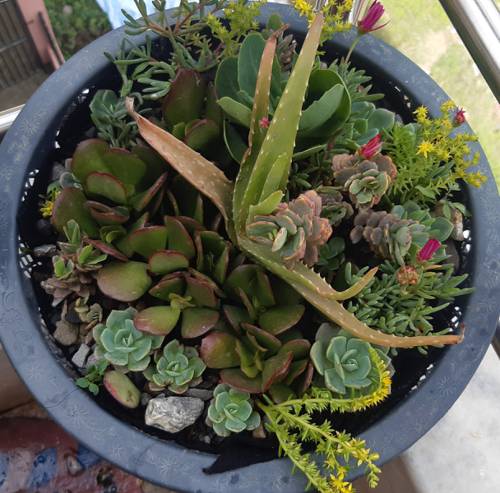
FAQ About Indoor Plant Heat Tolerance

What are some indoor plants that are particularly heat tolerant?
Some indoor plants known for their heat tolerance include succulents such as aloe vera, jade plant, and snake plant. Additionally, the ZZ plant and the heartleaf philodendron are also well-suited to warmer indoor environments due to their ability to thrive in less favorable conditions.

How can I improve the heat tolerance of my indoor plants?
To improve the heat tolerance of your indoor plants, ensure they are well-hydrated by adjusting your watering schedule during hotter periods. Use mulch on the soil surface to help retain moisture, and consider placing your plants in areas with indirect sunlight to reduce heat stress. Additionally, using fans to circulate air can help lower the ambient temperature around your plants.

What signs indicate that my indoor plants are suffering from heat stress?
Signs of heat stress in indoor plants include wilting, yellowing of leaves, brown leaf tips, and stunted growth. In severe cases, plants may drop their leaves or flowers. If you notice these symptoms, it's important to move your plants to a cooler environment and ensure they are adequately watered.

Can indoor plants recover from heat stress, and how?
Yes, indoor plants can recover from heat stress with proper care. The key is to identify the stress early and take corrective actions such as moving the plants to a shadier, cooler location, providing consistent and adequate watering, and ensuring the surrounding environment has adequate air circulation. Trimming damaged leaves can also promote new growth.

Should I fertilize my indoor plants during high temperatures?
It's generally advisable to reduce or even avoid fertilizing indoor plants during periods of extreme heat. High temperatures can increase evaporation and nutrient uptake, which might lead to fertilizer burn. Instead, focus on watering appropriately and providing shade to help plants cope with heat stress.

Why do some indoor plants fare better in heat than others?
Some indoor plants fare better in heat due to their natural adaptations to arid or tropical environments where they have evolved mechanisms to conserve water and tolerate higher temperatures. Typical adaptations include thicker leaves, waxy surfaces, and the ability to store water in leaves or stems, as seen in succulents and cacti.

How does high indoor temperature affect plant growth?
High indoor temperatures can lead to increased transpiration and potential dehydration if plants are not adequately watered. This can cause stress that slows growth or damages plant tissues. Furthermore, consistently high temperatures may interfere with photosynthesis, leading to poor growth and development.

Are there any cooling techniques I can use for indoor plants?
Yes, you can employ several cooling techniques to help indoor plants cope with high temperatures. Ensure adequate air circulation with fans, use shade cloths or blinds to block excessive sunlight, and group plants together to create a microclimate with increased humidity. Misting plants can also temporarily cool them by lowering the temperature through evaporation.

Do all indoor plants require the same temperature range?
No, not all indoor plants require the same temperature range. For instance, tropical plants like ferns and orchids prefer warmer and more humid conditions, whereas succulents and cacti thrive in hotter and drier environments. Understanding the specific temperature and humidity requirements of your plants is crucial for their care.

Can artificial lighting affect the heat tolerance of indoor plants?
Yes, artificial lighting can impact the heat tolerance of indoor plants. While grow lights can offer controlled lighting conditions, they may increase ambient temperature and contribute to heat stress. When using artificial lights, monitor both temperature and humidity to ensure a suitable environment for your plants.

What is the ideal temperature range for most indoor plants?
The ideal temperature range for most indoor plants is typically between 60°F to 75°F (15°C to 24°C). However, this can vary depending on the species. It's essential to research the specific needs of each plant to maintain optimal growth conditions.

How does humidity interact with heat tolerance in indoor plants?
Humidity directly influences the heat tolerance of indoor plants. Higher humidity can help reduce water loss in plants through the leaves, making them more resilient to heat. Conversely, low humidity levels can exacerbate heat stress, causing plants to lose moisture more rapidly, which may lead to dehydration and wilting.

Are there specific potting soils that help with heat tolerance in plants?
Certain potting soils can enhance the heat tolerance of indoor plants. Soils that retain moisture yet provide good drainage are ideal as they help keep the plant hydrated without becoming waterlogged. Adding components like perlite or vermiculite can improve aeration and drainage while retaining necessary moisture.

What role do plant roots play in heat tolerance?
Plant roots are crucial in heat tolerance as they are responsible for water and nutrient uptake. Healthy roots ensure that plants remain hydrated, especially during heat stress. Ensuring roots have sufficient space to grow, are regularly watered, and not subjected to compacted or overly dry soil is vital for maintaining plant health under high temperatures.

Can heat tolerant plants still suffer from sunlight exposure indoors?
Yes, even heat tolerant plants can suffer from excessive sunlight exposure indoors, leading to scorched leaves or sunburn. It's essential to provide filtered sunlight or place such plants away from direct window light when indoor temperatures are high to prevent damage.

What plant care mistakes can reduce a plant's heat tolerance?
Common mistakes that reduce a plant's heat tolerance include inconsistent watering, lack of humidity, positioning plants too close to heat sources, and using unsuitable soil. Over-fertilization and neglecting to improve air circulation can also stress plants, decreasing their ability to cope with heat.

How does a sudden change in temperature affect indoor plants?
A sudden change in temperature can shock indoor plants, leading to wilting, leaf drop, or stunted growth. Plants often acclimate gradually to temperature changes, so it's vital to maintain a stable environment to prevent stress from abrupt fluctuations.

Is it advisable to repot plants during hot weather?
Repotting plants during hot weather is generally not advisable because it adds stress to the plant already coping with heat. If necessary, choose early morning or late evening to perform repotting when temperatures are cooler, and ensure the plant is well-watered before and after the process.

How do succulents manage heat differently than other indoor plants?
Succulents manage heat differently by storing water in their thick leaves and stems, reducing the need for frequent watering. Their waxy coatings help minimize water loss through evaporation, and they can often tolerate bright light and heat better than other plant types.

Can I use air conditioning to regulate temperature for indoor plants?
Yes, you can use air conditioning to help regulate temperature for indoor plants, but it's crucial to monitor humidity levels as air conditioning can dry out the air, potentially harming some plants. A humidifier may be necessary to maintain adequate humidity levels for optimal plant health.
